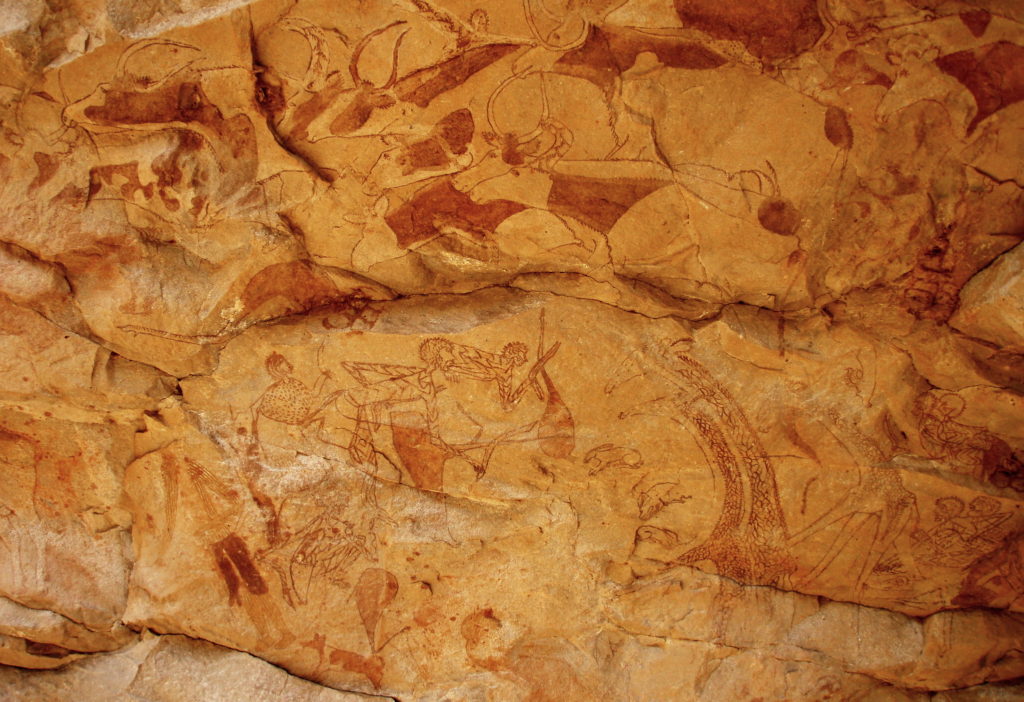Pastoral paintings and petroglyphs

Tikadiouine, Tassili
In this chronological-stylistic sequence of the Saharan rock art, domesticated cattle dominate the picked or painted compositions. However, petroglyphs of this style are controversial in that their technique and patina are often very similar to the Bubaline petroglyphs. For this reason some scholars consider that both the Bubaline and the Pastoral are a single unique style belonging to the Pastoral (Neolithic) period during which images of both wild and domesticated animals were picked by herders.
Regarding the Pastoral paintings, they are obviously distinguishable from the Round Heads. The technique is different, using a tiny border of light red ochre, encircling the figures. In general, the figures are much smaller (usually not more than about 20 cm in height) and they are represented in great detail, including facial and anatomical features, which are never expressed in the Round Head art. The compositions are also different, with the abundance of every-day life scenes, the disappearance of masks, horns and other bodily attributes so frequent in the previous artistic tradition.
Representations of domesticated cattle constitute the favoured theme of the painters. Hundreds of bulls and cows are represented in herds, although occasionally alone, and accompanied by images of men, showing correct anatomical proportions. The Pastoral paintings bear witness to a realistic conception of art which is far removed from the figurative symbolism featured by the Round Heads. This clear break in the pictures has been attributed to the arrival of new people in the Central Sahara.
Pastoral art is attested all over the Central Sahara which is likely to be related to the herdsmen lifestyle, which requires regular movement throughout a large territory in search of fresh pastures. In the area of the Round Head paintings, images of domesticated cattle were sometimes added on the same walls but they are also found in new shelters without previous paintings.
Bibliography (selection):
Dunne, J. et al. (2015) First dairying in green Saharan Africa in the fifth millennium BC. Nature 486(21): 390-94.
Holl, A. F. C. (2004) Saharan Rock Art: Archaeology of Tassilian Pastoralist Iconography (Walnut Creek, CA: AltaMira).
Jelinek, J. (2004) Sahara. Histoire de l’art rupestre libyen. (Grenoble: Editions Jerome Millon).
Muzzolini, A. (1995) Les images rupestres du Sahara (Toulouse: author’s edition).
Smith, A. B. (2005) Creating a Landscape for Saharan Pastoral Archaeology (Oxford: BAR International Series).